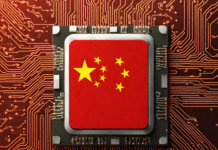Advanced Micro Devices (AMD), a major player in the graphics processing unit (GPU) market, has been tweaking its business operations in China. While the company has refuted online rumors about slashing hundreds of jobs in its Shanghai office, it did confirm a “small optimization and restructuring” in a recent statement. But what does this really mean, especially in a market as significant yet challenging as China which is already struggling in the Chip sector?
China accounted for 22% of the total AMD external sales last year
China has been a lucrative market for AMD, accounting for 22% of its total sales to external customers in 2022. However, a U.S. export ban has impacted AMD and its main rival, Nvidia, limiting their abilities to sell advanced AI-training GPUs in the country. As a result, a robust black market has emerged, filling the gap and serving China’s tech giants who are on the hunt for top-tier AI chips.

Despite these hurdles, AMD’s CEO Lisa Su remains optimistic about the potential in China. She recently stressed the company’s commitment to be “fully compliant with U.S. export controls” while expressing a strong desire to offer AI solutions tailored for the Chinese market.
Although AMD hasn’t given details about its recent “restructuring” in China, it’s critical to remember that in the local context, the term often refers to job cuts. Under Chinese law, a layoff involving more than 20 employees calls for official labor authority intervention. AMD, like other U.S. tech companies Qualcomm and Marvell Technology, seems to be reducing its workforce in China as part of an industry-wide reaction to the U.S.-China tech war and global consumer electronics demand fluctuations.
Everyone is probably confused if AMD is retreating or simply adapting? It appears the company is taking calculated steps to navigate through complex geopolitical and market conditions. By optimizing its operations, AMD seems to be positioning itself to capture what it sees as long-term opportunities in China, without alienating itself from existing U.S. policies. With its strong revenue stream from the country, AMD is unlikely to completely withdraw, but a shift in strategy is clearly happening.
RELATED:
- AMD and NVIDIA reportedly designing Arm-based Windows chips
- Alienware M18 laptop with new AMD Radeon RX 7900M GPU launched
- Download the best GCam APK for Samsung Galaxy S23 Ultra
(Via)







